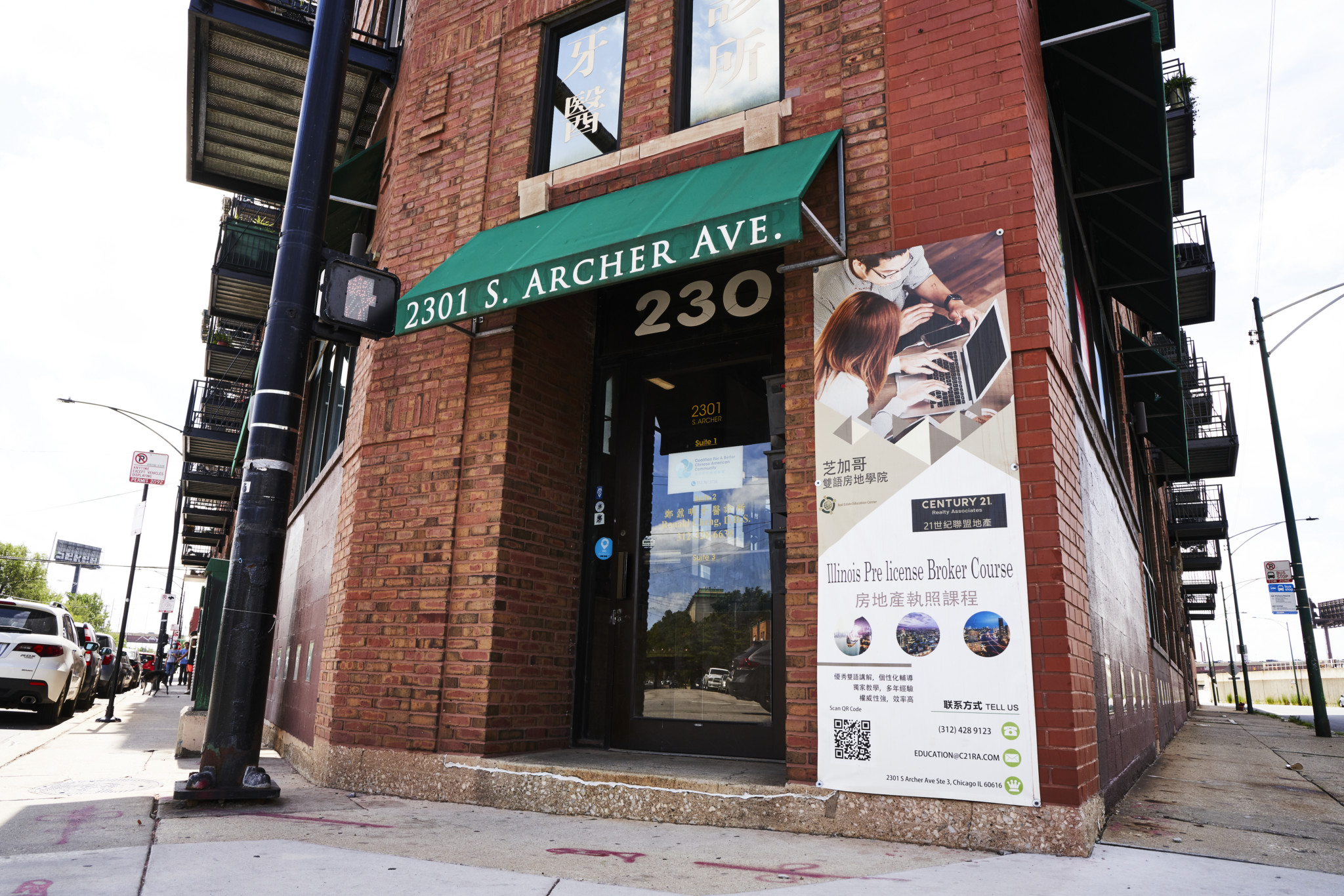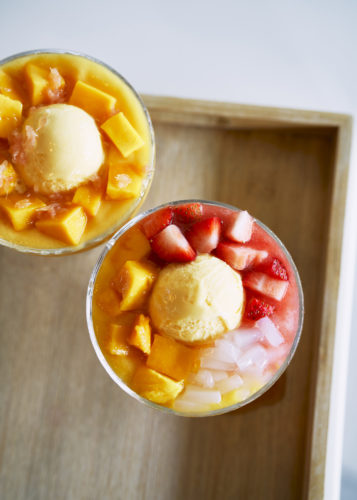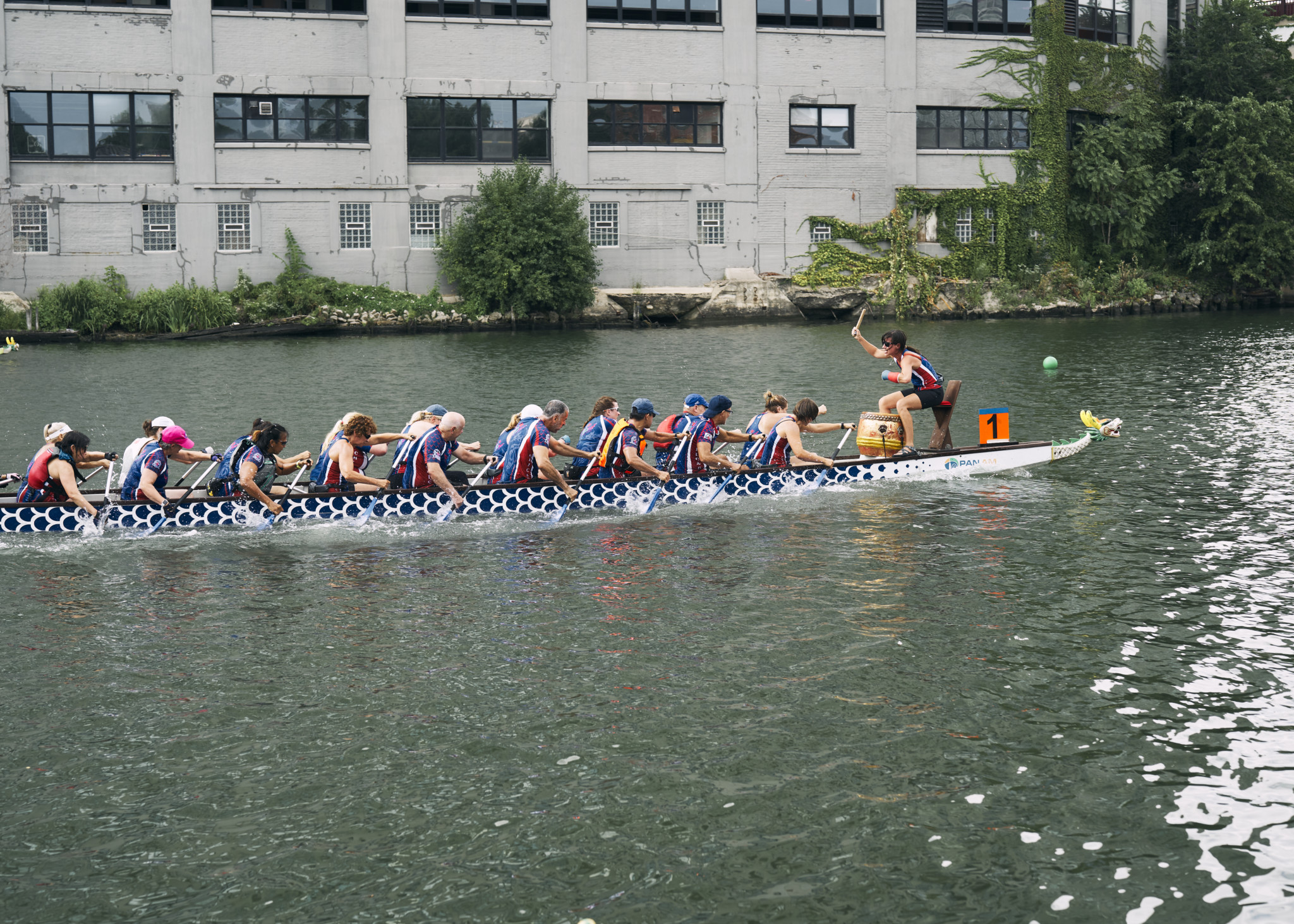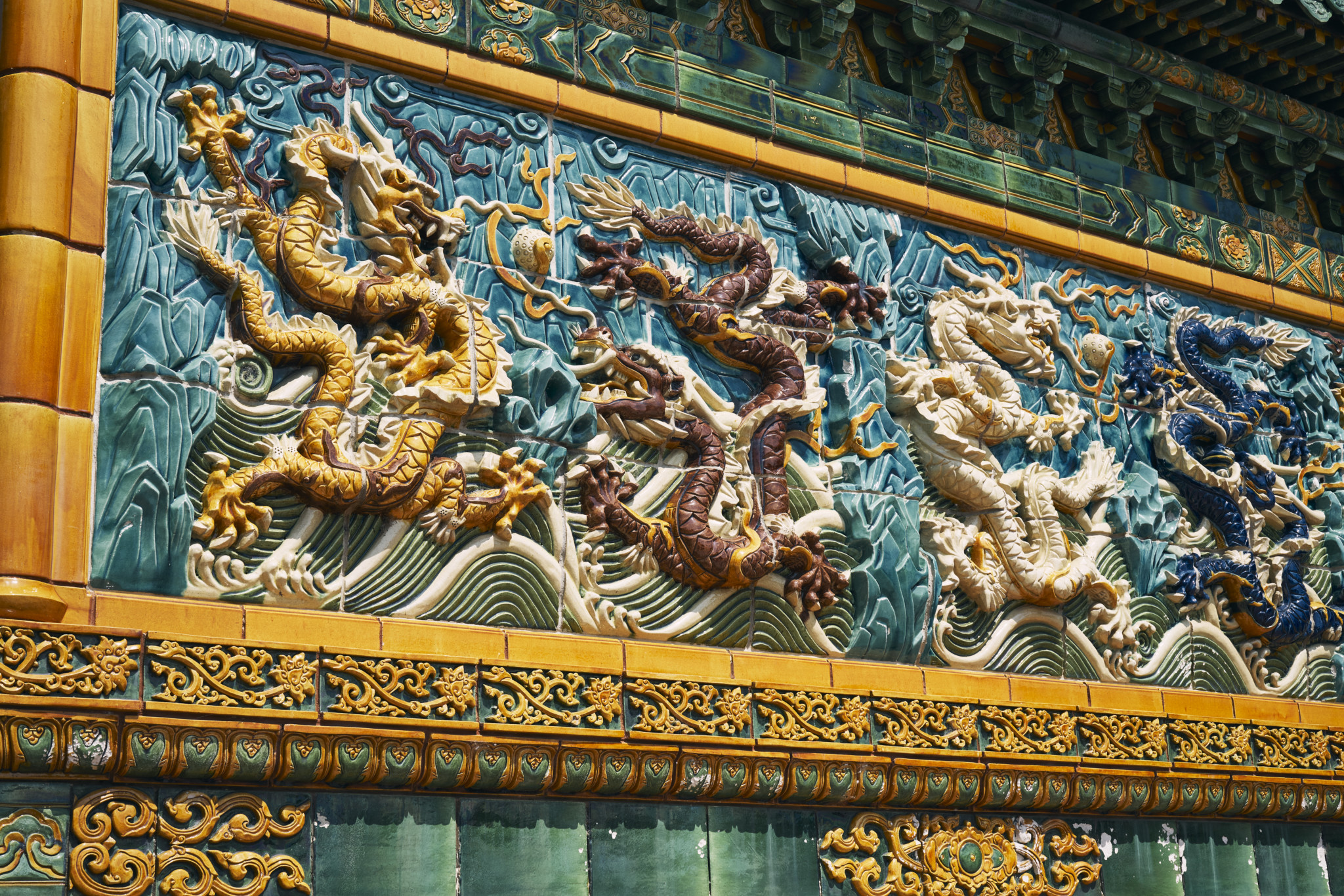- Best Community Advocacy Organization
- Best Wall
- Best Culture Event
- Best Dessert
- Best Festivities on Water and Land
When I think of Chinatown, my mind instinctively pictures the bright red gate on South Wentworth Ave. that boldly announces, “Welcome to Chinatown” in gold italic letters, the two-story outdoor mall that encompasses Chinatown Square, the Nine Dragon wall next to the Cermak-Chinatown station. But increasingly, discussions of the Chinese-American community in Chicago will refer to the Greater Chinatown Area, expanding beyond the commercial area that is often described as the heart of Chinatown.
The commercial area is small, encompassing a few blocks of Cermak and Wentworth Avenues. “The Wentworth part has been around since Chinese-Americans first moved from the South Loop to downtown in 1912,” said Grace Chan McKibben, the Executive Director of the Coalition for a Better Chinese American Community. Chinatown Square has been growing since the late ‘90s, she explained. “The Greater Chinatown Area acknowledges the fact that the Chinese-American population has been steadily growing out South and West along the Archer bus line. So the Chinese-American population now is in Chinatown, Bridgeport, McKinley Park, and also in Brighton Park and Archer Heights,” said Chan.
Chicago’s Chinatown is often recognized as the only growing Chinatown in North America, referring not only to a growing population but growth in diversity as well. “There are folks representing different parts of China, Hong Kong, Taiwan, speaking different dialects,” Chan said. “The original Chinatown folks speak Toisan, which is a sub dialect of Cantonese, and now we’re seeing more Mandarin speaking people, and it’s shown by the diversity of the restaurants. Now their restaurants represent different cuisines within China.”
“The Greater Chinatown Area encompasses this whole area that is where the folks are living, and so there’s shops, there are schools, there are car repair shops all up and down Archer that kind of reflect the services that people need.”
If you want to experience Chinatown’s growing diversity, you can let your stomach lead the way—whether it’s to Sichuan cuisine, Hong Kong-style cafes, Taiwanese popcorn chicken, or even Japanese ramen, Korean corn dogs, and Vietnamese pho. And in the process, you might just find yourself exploring outside the boundaries of Chinatown’s traditional commercial area into nearby neighborhoods where Chinatown’s growth is taking place. (Maddie Parrish)
Neighborhood caption Maddie Parrish is the education editor at the Weekly.
Best Community Advocacy Organization
Coalition for a Better Chinese American Community (CBCAC)

Founded in 1998 by C. W. Chan, the Coalition for a Better Chinese American Community (CBCAC) seeks to unite the resources of the Greater Chinatown Area. Chan—a former board chair of both the Chinese American Service League, a social service organization, and the Chinatown Chamber of Commerce, which represents the interests of businesses—had a vision that community organizations which typically represent different interests could work together, explained Grace Chan McKibben, the Executive Director of CBCAC.
“We do see ourselves as a bridge-builder, and include as many diverse voices within the community as possible when there is an issue or a project,” McKibben said.
CBCAC initially formed in response to large numbers of casino buses that would come into Chinatown day and night to pick up seniors and take them to casinos. “CBCAC’s first project was to work with the casinos to limit that, so that now there are still casino buses, but there are smaller numbers and they only pick up in the mornings and drop off at night,” McKibben said.
Since then, they have successfully advocated for a field house and a library. Now, they are advocating for a neighborhood high school for Chinatown and Bridgeport students. “There has never ever been a high school that is not selective enrollment, not charter or anything in the Chinatown or Bridgeport neighborhoods in the history of CPS,” McKibben said. Students in Chinatown and Bridgeport go to as many as fifty to sixty different schools across the city, with only about one third being in selective enrollment schools. “So this is what we’re pushing for, a school that is close by, that students don’t have to test into, that will center immigrant services and experience, offer bilingual education, English and Chinese—possibly English, Chinese, and Spanish because of the demographics of the students in the Greater Chinatown Area. But really have services that would be comfortable for parents that have lower-English ability to access.”
CBCAC is also pushing for more affordable housing in the Greater Chinatown Area, specifically for seniors and families. “While there are a few senior housing buildings that are for low income seniors in the neighborhood, in both Chinatown and Bridgeport and the Greater Chinatown Area, the waitlist is very long. The wait lists are ten, fifteen years long,” McKibben said. “So in general, more resources from city planning and state funding organizations to think about how they can support this community, but also advocating for the community to think about what needs they have and how to voice those, whether it is having high school or having more park spaces.”
Before the pandemic, CBCAC’s outreach involved a combination of phone banking, community meetings, and door-to-door outreach. Since its onset, they’ve pulled back the in-person work but have continued with phone banking.
CBCAC is also working on a redistricting campaign. In 2011 as part of a larger coalition, they were successful in advocating for the Illinois Voting Rights Act of 2011. “We now know with the census numbers that it is completely possible to draw a city ward that has a majority Asian American population,” McKibben said. “So we’re working hard on this redistricting, both in drawing the map ourselves, but also getting community voices to be behind it, residents as well as organizations, and then urging City Council as well as the Chicago Advisory Redistricting Commission. We’re urging both of them to draw a city map that would have a majority Asian American ward.”
In addition to individual advocacy projects, CBCAC conducts get-out-the-vote campaigns for every local, state, and national election. “A lot of our constituents are working long hours in restaurant retail jobs and don’t really have time,” McKibben said. “And then if they don’t see how it’s connected with them directly, then they won’t spend the time to do it.”
This work involves sharing information about why voting is important and how to do it. Last year, they did in-person assistance, including driving individual people to polling places and explaining how to apply for and fill out a vote-by-mail ballot.
“I think the level of engagement is still lower than the general stats,” McKibben said.“Because it’s an immigrant community, there are constantly new people coming. So every season, it feels like you’re talking to a lot of people that, even if they’re citizens they’re not registered, or if they are registered, they haven’t voted before. So there’s still a lot of engagement that needs to happen.” (Maddie Parrish)
Coalition for a Better Chinese American Community, 2301 S. Archer Ave. (312)-761-9738. info@cbacchicago.org.
Best Wall
Nine Dragon Wall
Stop someone on the street and ask them to picture a wall. Perhaps they’ll come up with an image in their head of the ancient Great Wall of China or the infamous Trump border wall that so animated his 2016 campaign supporters. Ask someone to name their favorite wall in Chicago’s South Side. Maybe they’ll tell you about the Rev. Jessie “Ma” Houston Jackson Mural opposite the basketball courts at 49th and Drexel, or maybe they’ll just give you a blank stare and walk away.
For those who fall into the latter camp, boy do I have a wall for you to set your eyes to. Standing between the corner of Cermak and Wentworth and the Red Line entrance is the Nine Dragon Wall, bearing a warm “Welcome to Chinatown” in both Chinese characters and English script. This wall is a replica of an original Nine Dragon Wall in Beijing’s Forbidden City, where the Qing emperor who commissioned it in 1773 resided.
The original used to screen the emperor’s compound from the peering stares of the public. Chicago’s 2003 replica blocks from view a less-than-magnificent parking lot that charges two bucks an hour for a spot. “Why are there nine dragons?” you might wonder. Because in the Daoist tradition odd numbers are ‘yang’ numbers, and nine the greatest of them. “Why dragons?”
Because dragons represent rain, thunder, and ‘yang.’ They were symbols of the supremacy of the emperor, often embroidered onto their regal robes.
The replica is made principally from jade and gold-glazed tiles that form the roof, back, and edges of the tableau. Green, red, and white dragons are depicted in bas relief against the teal backdrop of blustery sky above undulating green hills. Their serpentine bodies, fuming nostrils, clasping talons, and leonine faces present an amalgamation of many beasts.
As I peered upon the wall on a late August afternoon, storm clouds threatening on the horizon, many passers-by on their way to the train or returning home from work kept their faces straight ahead or down on their phones, unaware of or ignoring the splendor of the striking Nine Dragon Wall, perhaps because of its humdrum locale. I was thrilled when a couple came up and started taking pictures of the wall, both of them grinning in front of it. If these out-of-town sightseers came to marvel at it, maybe you Chicagoans should come out too. (Max Blaisdell)
Nine Dragon Wall, 158 W. Cermak Rd.
Best Culture Event
Chinatown Hip-Hop Festival
Many people knew Shifa Zhong from TikTok, probably while browsing for the best Chinese food in Chicago. Immigrated to the U.S. from China at the age of 13, the now twenty-four-year-old Bridgeport resident has become the unofficial voice for the youth of Chinatown on social media.
On TikTok and Instagram, Zhong brought his 22,000 followers to the hidden gems of Chinatown, from the latest Boba shops and the oldest bakery. “Chinatown is my playground,” reads the bio of Zhong’s TikTok “chiantownshifa.” He proved that by break dancing in Chinatown Square, playing Jae Trill’s JOTARO!. That part of Chinatown—a rich cultural avenue that goes beyond dumplings and dim sum—is what Zhong wanted to showcase to his audience.
Zhong started to organize the Chinatown Hip-Hop festival during his sophomore year in college in 2017. In one TikTok video, Zhong explained that Hip-Hop functioned as an empowerment for the youth population in Chinatown, as well as a bridge connecting the Asian and Black cultures in the community. “If we are bringing Hip-Hop to Chinatown, we have to do it with respect to Black culture, history, and community,” he said.
In a video, Zhong said he realized that the festival would not be possible without the support from across the community, especially with the older generations, who are not necessarily ready to connect with other cultures and communities. This year, he collaborated with Gene Lee, the longtime chairman of the Chicago Chinatown summer fair and nicknamed “the mayor of Chinatown,” to bring back the Hip-Hop festival as part of the two-day Chinatown summer fair on July 31 and August 1.
While the summer fair has been a Chinatown staple for decades, 2021 was the first time younger generations became part of the organizing effort. Along with his startup team Tian Represent, Zhong and other young residents marketed the event on social media, with a focus on messaging to youth and the community outside of Chinatown. In an interview with the Reader, Zhong said that it was surprising to many that Chinatown community leaders are letting the young people be part of the team.
It was a necessary and important move, other organizers said, since it shows the leaders’ willingness to engage younger generations who have grown up in the community and cared about it.
The threat of COVID-19 made organizing such a large-scale event difficult. Not having enough sponsors at the beginning, Zhong and team took to GoFundMe for their fundraising effort, which ended up bringing the organizers $7,000 over their $25,000 goal, Block Club Chicago reported. With the sponsorship and donation, the cross-generational collaboration held the largest Asian American festival in the Midwest with over 40,000 attendees.
The summer fair arrived in Chinatown as the city recovers from the pandemic – where AAPI businesses were hit particularly hard. Zhong said that more than sixty vendors participated in the 2021 fair, with a majority of AAPI vendors, and local businesses totalled more than $10,000 in sales during the two days. During the night, hip-hop artists like King Marie, Supa Bwe, and Eddie Supa filled up the square with live performances. “My mission is accomplished; the community got to thrive because of all of you,” Zhong told the crowd. (Yiwen Lu)
For more information on the Chinatown Hip-Hop Festival, visit hiphopinchinatown.com
Best Dessert
Ice Grass Jelly Signature

Finding the best dessert in Chinatown is an exercise in intuitive eating, working through the most joyful mental flow chart. Are you craving something chewy or crunchy? Cold or hot? Fruity or nutty? Rich and creamy, or light and refreshing? Is this more of a post-meal treat or a midday snack? Are you sharing it with friends? And perhaps, most importantly, is it not too sweet?
There’s a running joke in Asian-diaspora online communities that the highest compliment you can pay about a dessert is that it’s not too sweet. Once you get off the Red Line at the Chinatown stop, whether you head south on Wentworth or cross the road and veer slightly west on Archer, both directions will lead to a staggering number of excellent candidates. Taro rolled ice cream? You got it. Red bean paste-stuffed egg waffles? Done. A towering bowl of shaved ice with chunks of fresh mango topped with vanilla ice cream? It’s just another Tuesday.
But here’s the thing: the best dessert is actually on Clark at Meet Fresh, a Taiwanese dessert cafe. Meet Fresh has a large menu, and while I’m sure everything is delightful, the Icy Grass Jelly signature is really what you should order.
The Icy Grass Jelly signature is a bowl of herbal grass jelly shaved ice with a layer of dark herbal jelly, topped with lilac and gold taro balls. If you want a creamier texture, you can add a swirl of the complimentary coffee creamer. It’s refreshing and satisfying: slippery, chewy, soft, and crunchy all at the same time. It’s perfect for sharing with friends or for eating by yourself on a hot and humid summer evening. It celebrates flavors that you don’t find as frequently outside of neighborhoods with large Asian communities. It’s self-assured, or as much as a dessert can be.
And best of all, it’s not too sweet. (Charmaine Runes)
Meet Fresh, 2026 S Clark St., Unit A. Sunday-Monday and Wednesday-Thursday, 1pm-11pm, Friday-Saturday 1pm-12am, closed Tuesday.
Best Festivities on Water and Land
Dragon Boat Race for Literacy

Teams racing on the Chicago River in brightly decorated dragon boats to the beat of a drum; Tai Chi, opera, and sword swallowing on land; booths tabled by community organizations: Chinatown’s annual Dragon Boat Race for Literacy in Ping Tom Park has festivities for community members and tourists alike. This year’s Dragon Boat Race took place on August 28.
Hosted by the Chinatown Chamber of Commerce, the annual Dragon Boat Race for Literacy fundraises for the chamber itself as well as for local literacy programs. Each year, five to eight organizations apply for grants, and usually all of them are granted, according to Emma Yu, the Executive Director of the Chinatown Chamber of Commerce. Last year, funds went to St. Therese Chinese Catholic School, James Ward School, Pui Tak Christian School, John Charles Haines School, Project: VISION, and SitStayRead.
More than thirty teams, each composed of fifteen to twenty-five people, begin the race at 8:30am. “More than half are from the big corporations outside the Chinatown community, some are the Dragon Boat Club teams, a few are community teams,” Yu said. Guests are welcomed at the opening ceremony, which begins at 9am, and the festivities last until 4pm. In addition to their usual entertainment program, this year, they invited Sally Marvel, one of fifty known female sword-swallowers worldwide.
In addition to vendors, the Chamber of Commerce offers two free community booths. This year, the booths were occupied by the Coalition for a Better Chinese American Community, Project: VISION, the Chicago Board of Election Commissioners, and the Illinois Department of Children and Family Services.
“Traditionally, this event is to promote Chinatown, and also to promote this great, ethnic sport, which has been there for more than 2,000 years,” Yu said. “And I believe this is a great opportunity for people outside of this community to learn about this culture, and for them to come to Chinatown. And in this year, 2021, in this post-pandemic time, it’s extremely important because it’s also helping the Asian-American owned small businesses in this area, because we are bringing visitors, we’re bringing tourists.” (Maddie Parrish)
For a recap on this year’s Dragon Boat Race for Literacy, visit chicagochinatown.org.



